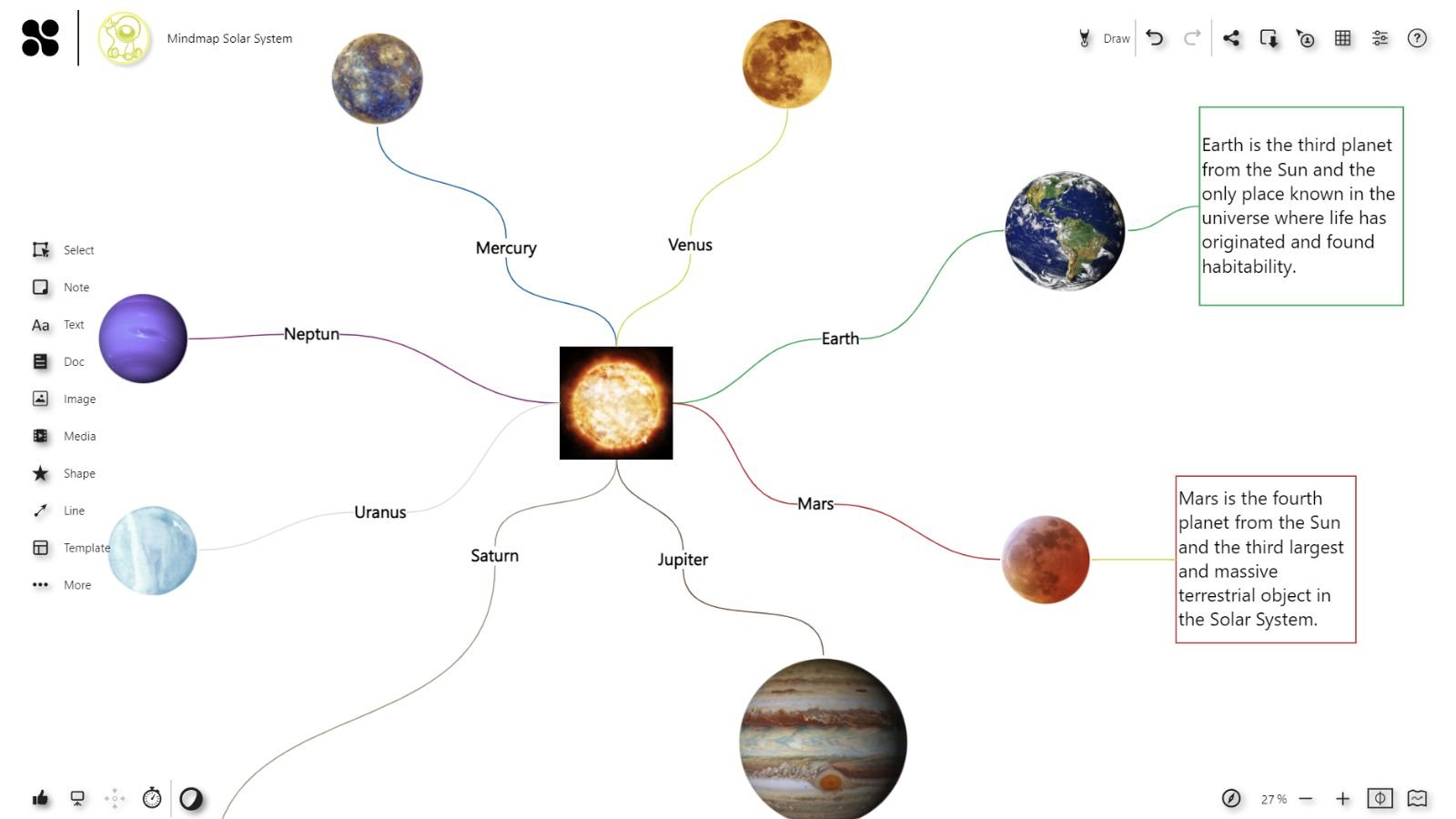In an age where remote collaboration has transitioned from a luxury to a staple, the success of digital workshops have never been more relevant. From brainstorming sessions that mirror the neural pathways of our brains to the expansive realm of visual collaboration, we find ourselves at the crossroads of tradition and innovation.
As onsite workshops evoke nostalgia with their tangible interactions, the digital world unfurls a tapestry of possibilities, overcoming logistical barriers and redefining engagement.
In this blog post, we'll journey through four pivotal activities that are reshaping the contours of remote collaboration. Harnessing the power of online tools, especially whiteboards, we'll delve into strategies and techniques that not only replicate but, in some cases, surpass the efficacy of their physical counterparts.
Conducting Dynamic Brainstorms in Virtual Meetings
In the digital age, effective brainstorming during virtual meetings is paramount. Leveraging an online whiteboard offers an unparalleled advantage in this arena. Imagine being in a video call, relying solely on chat and screen-sharing to exchange ideas without vocalizing them. Yes, one person can share their screen to jot down ideas as they arise, but this method often sidelines introverts who might hesitate to voice their thoughts in a larger group setting.
Enter the online whiteboard—a game-changer. It democratizes the ideation process, allowing every participant to contribute seamlessly. Whether you're a chatterbox or prefer to remain in the background, you can easily share your insights via sticky notes without the pressure of vocalizing them.
While using a chat feature is a potential alternative, it lacks the visual dynamism necessary to stimulate and foster creativity. A mere chat doesn't invigorate the brain or spur innovative thinking. On the other hand, by placing ideas on an online whiteboard, they become visual entities. This platform empowers participants to further enrich the brainstorming session with images, videos, and other visualizations, making the process more inclusive and robust.
In essence, to turbocharge your remote brainstorming sessions, an online whiteboard isn't just a tool—it's an essential.
Visual Collaboration Enhanced: How Online Whiteboards Elevate Teamwork
Humans are inherently visual creatures. A multitude of studies reinforce the notion that we're naturally drawn to imagery over textual content. The rise in our collective aversion to long textual content can largely be attributed to our evolving digital behavior. Just consider the landscape of today's social media platforms; images and videos indisputably reign supreme as the primary content forms.
Enter the era of the online whiteboard, a tool designed to seamlessly align with our predilection for visual communication. It empowers multiple users to simultaneously delve into a world of visual knowledge-sharing, transcending traditional barriers. Not confined to just uploading images or videos, the whiteboard platform opens the door to real-time drawing, sketching, and annotating. This harks back to our most organic form of expression - the use of a pen. Surprisingly, this intuitive mode of communication is often cast aside as professionals immerse themselves in the corporate world, overshadowed by the more sterile act of typing documents or sending chat messages.
In recognizing this disparity, there's a vast, untapped reservoir of potential to be harnessed. By embracing and integrating online whiteboards into our digital communication toolkit, we're not just adopting a technology, but rekindling a deep-seated human instinct for visual storytelling and collaboration.
The Evolution of Mind Mapping with Online Whiteboards
Mind mapping and concept mapping are globally recognized techniques designed to visualize knowledge and depict the intricate web of relationships between different topics. Their widespread appeal lies in their innate alignment with the human brain's organizational structure. Traditionally, the quintessential tool for such exercises was a sheet of paper and a pen. Beginning at the center with a central idea and spiraling outwards with interconnected nodes, the process seems simple enough. Yet, anyone who has ventured to mind map on a tangible medium has inevitably grappled with its constraints—whether it's running out of space or the inability to collaboratively involve multiple participants simultaneously.
This is where online whiteboards come into their own. They shatter these limitations by offering an expansive virtual canvas, ensuring you never fall short of space. Further amplifying their utility, these platforms facilitate real-time collaboration, allowing unlimited participants to contribute to the mapping process concurrently.
Beyond just linking ideas, mind maps and concept maps serve as visual tapestries that weave together stories, concepts, and more. By incorporating multimedia elements like images, drawings, videos, and a spectrum of colors, these visual tools gain a richer dimension.
In the realm of remote meetings, when the goal is to chart out complex ideas or connections, turning to an online whiteboard isn't just an option—it's the optimal solution.
Check this article on how you can create mindmaps with the online whiteboard Collaboard.

Bridging Digital and Physical: The Dynamics of Online vs. Onsite Workshops
Workshops, by design, are collaborative endeavors meant to foster engagement and facilitate ideation among attendees. In traditional, in-person settings, the vibrancy of face-to-face interactions is palpable. However, replicating this richness in remote workshops often feels elusive. Despite the challenges, the nuances of each approach present unique opportunities.
Onsite workshops, while offering the tangible benefits of human interaction, come with their share of constraints. The financial and time commitments are considerable: participants must travel, venues must be equipped and often rented, and logistical needs—from flipcharts to sticky notes—demand meticulous planning. Moreover, the spatial and temporal boundaries of physical spaces mean that if a session needs continuation, re-establishing the context becomes yet another challenge.
This doesn't negate the undeniable advantages of physical workshops. The ability for facilitators to gauge body language, the camaraderie among attendees, and the distinctive ambiance are aspects virtual setups grapple to emulate.
However, the digital realm, especially with tools like online whiteboards, brings forth a set of compelling advantages that could level the playing field:
-
Remote Readiness: Prep for your workshop from any corner of the globe. Gone are the days of early venue arrivals for setup.
-
Continuity and Agility: The digital nature ensures that resuming or iterating upon a workshop is seamless—an asset for organizations championing agile methodologies.
-
Engagement Reimagined: Launch virtual icebreakers to cultivate a lively workshop atmosphere, even from afar.
-
Instantaneous Feedback: Built-in voting and rating tools on online platforms can garner rapid, real-time responses, often outpacing traditional methods.
-
Resource Efficiency: Reuse digital templates and sketches, substantially cutting down on the prep time for future sessions.
In summary, while onsite workshops have their undeniable charm, the versatility and convenience of online platforms—especially with tools like whiteboards—offer a dynamic alternative for our increasingly digital-first world.
Check this blogpost for 5 tips for more effective collaboration during an online workshop.
Summary
Online Whiteboards have emerged as powerful platforms for innovation and engagement in the ever-evolving landscape of remote collaboration.
We've delved deep into four transformative activities, demonstrating how online tools, especially whiteboards, can rival, if not surpass, traditional methods. As we bridge the gap between physical and virtual, it's evident that the future of workshops is not just digital, but dynamic. Embrace these strategies to elevate your collaborative endeavors and chart a course for success in our interconnected world.


